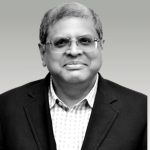Podcast Themes
Multiple perspectives on a topic that you are curious about!

Anyone who wants to join the Indian Armed Forces as an officer has to go through the Service Selection Board (SSB). The ultimate goal is to select people with Officer Like Qualities (OLQs). Thus, the focus is on hiring based solely on potential rather than experience or academic qualifications. Our digital world is also moving towards potential-based hiring. Hear how the corporate world can learn some lessons from the SSB.

Harsh speaks about how he looks for good talent where it is at an Executive Level or at a Board level. He speaks about the mix of passion, determination and perseverance that he looks for in the individuals he hires.

Amy speaks about what traits we should look for in leaders if we are solving for psychological safety in an organization. She shines the light on three traits – Curiosity, Humility and Empathy. She also speaks to the limitations of the interview process and how we could consider getting the candidates to interact with the team to suss out the manner in which they engage with the people around them.

Darleen speaks about the challenges in hiring effectively in the remote world. Atul Bhandari, Ritu Kochhar and Rohit also share their perspectives around how we need to tap into stories much more in these times and how remote work has opened up the aperture in terms of where people look for talent. They also share an interesting perspective around how companies are thinking about experience versus potential in these times.

Bill speaks about how Amazon uses the Bar-Raiser process to ensure that it recruits great leaders into the company. He specifically speaks about the role of a Bar Raiser and how he/she is empowered to uphold quality standards without being pressurized by the “here and now” demands of the business. He also speaks about how Amazon trades off the Type 1 and Type 2 errors that often occur while recruiting.

Sudhir speaks about Judgment, Influence and Drive as the three markers of potential and how the emphasis shifts across these three during the career of a professional in HUL. For the first few years it is Drive, then it moves to Influence and eventually in senior management it is judgment. He also speaks about how HUL thinks about what is a considered a good hit rate with judgment. He goes on to speak about how HUL filters for caliber and character, often two orthogonal dimensions.

Vinay talks about how Narasimha Rao picked his team members and think about the portfolio of capabilities in his team. He specifically alludes to the fact that he was self-aware about what he knew and didn’t know and was able to hire best in class talent without feeling insecure. He also talks about how Narasimha Rao brought in diversity of thought across various topics to ensure it was a balanced team.

Amit discusses how he thinks about hiring and creating a nurturing climate for his team to deliver performance. He also shares how he invests time with each of his colleagues and help build their capability. He also talks about how he handles exits from Bain Capital. He talks about the realities of a corporate pyramid and stresses the importance of handling the people that don’t go up the pyramid with empathy.

One of the key challenges as one moves from a start-up to a scale up includes getting senior talent from the outside and setting them up for success. Dheeraj talks about how he looks for the “operating system” of a leader to see if that fits with Nutanix. He also underscores the importance of focusing on the HOW and not the WHAT in the first 6-9 months.

Articulating the organizational culture is often treated as one of those fuzzy things that large organizations like GE and HUL do. But it is arguably more critical in a young and small organization where the cost of a wrong hire hits the organization much harder than when you have 10,000 people. Karthik talks about how he thinks about culture and how he hires for it.

Nandan talks about how the Government is fundamentally different from the Private sector in terms of how financial and human capital decisions are made. He talks about he thought about navigating these constraints to drive to the outcomes he had committed. He also talks about a couple of mistakes leaders often make in transitions.

Unlike the analog world, employees and customers in the digital world are at the centre and the organization and processes are built around them. This makes the hiring of employees a very significant task. How does a leader go about hiring someone and what are their markers for potential? don’t miss the insightful anecdote about The Knowledge test that the London cab drivers have to take and how that’s relevant to this nugget.